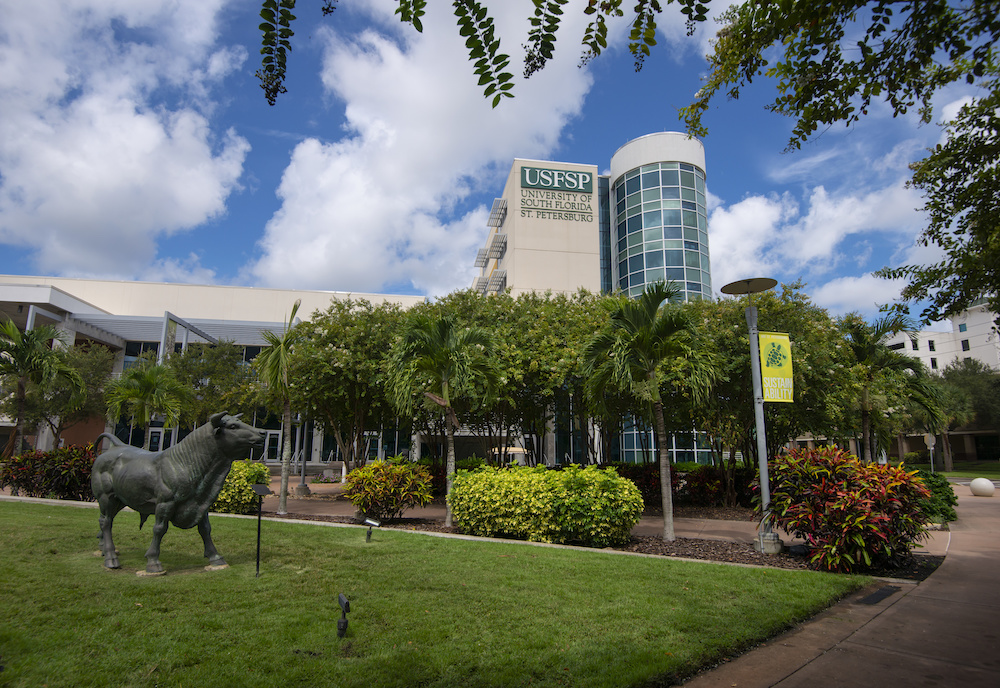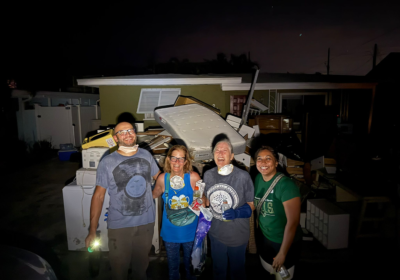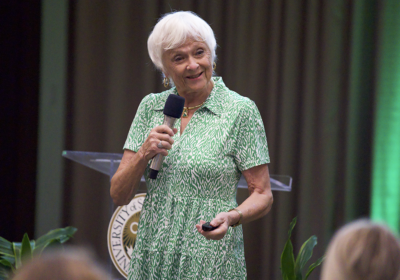USF designated as first academic institution for statewide human trafficking data repository

USF will now serve as the human trafficking data repository for the entire state of Florida.
Gov. Ron DeSantis recently signed Senate Bill 7064, authorizing the USF Trafficking in Persons (TIP) Risk to Resilience and Research Lab to spotlight human trafficking hotspots and commence region-specific policy making as well as streamline law enforcement efforts.
The statute – which will go into effect July 1 – strengthens legal repercussions for human trafficking offenders and mandates judicial circuits to deliver educational programs for those convicted.
It will also require the Department of Law Enforcement, municipal police departments, county sheriff’s departments, 270 county attorney’s offices and state attorney’s offices as well as service providers for victims of human trafficking to submit their data to the USF data repository, rendering the collegiate institution the first of its kind to compile such data.
The idea of the TIP Lab was conceived by Joan Reid, a professor of criminology at USF and the current director of the lab. Working with associate professor of criminology Shelly Wagers, the two professors outlined the development of a unified database which could be utilized to systematically diminish the incidence of human trafficking on a local level.
Wagers, a driving force behind the inception of the TIP Lab, said the $92,000 Strategic Investment Pool (SIP) grant they received in March 2020 enabled her and Reid to begin executing the latter’s vision for the lab.
“Her vision was of a unified database where we could have a wide variety of researchers come work together on different projects and pre-siloed data, siloed information, human trafficking data and put it in one place and direct it more systematically to increase our knowledge,” Wagers said.
In fall 2020, she and Reid conducted a needs assessment of individuals in the anti-trafficking movement to gauge the lab’s potential utility.
“When we look at all the people in the anti-trafficking movement, you’re looking at nonprofit practitioners. In the field, case managers, but you’re also looking at the Department of Children and Families and law enforcement, a wide variety of people. And the idea was, what do they need? What do they need to better address or fight that fight, and within that what could fall in our wheelhouse of a product the lab could do that could give them something?” Wagers said.
Maintaining a cohesive view of the region’s needs was a priority, Wagers said.
“You want the frontline workers all the way to the CEOs. You don’t want just one perspective and from one group. You try to get the whole picture and then you’re trying to see what’s consistent across all of those,” Wagers said.
After in-depth analysis of the data, two key overarching needs were evident – the need for data and the need for victim services.
“They don’t have a clue. They feel like they’re fighting blind. Where is it happening? How much is it happening? Who’s really impacted? They kept saying down to the zip code level. Meaning at the bigger state picture, county picture, but community level where we work, what’s happening here? And how does that fit into the bigger picture?” Wagers said.
“The second need that arose was the ability to locate and find vetted saved services and connect to them quickly. And, to have a better understanding of where the gaps in services are, by location type and by who the survivor is,” Wagers said.
The project then diverged into the Bridging Resources and Information Gap (BRIGHT) – which will catalyze the speed at which survivors of human trafficking are connected to aforementioned vetted services – and the data repository which Reid had originally envisioned.
“Our goal is to ultimately be able to create a picture that’s going to … help inform policies and programs. It can also then look at the impact of those by looking at the change in that data over time to help us better evaluate which policies and programs are effective,” Wagers said.
But the benefits aren’t restricted to the government. USF’s own College of Behavioral and Community Sciences will flourish as well, according to Wagers.
“Once we have that data, students who want to study or learn more about human trafficking, they’re going to be attracted to come. To work with Reid and us in the lab on questions,” Wagers said.
USF is the first academic institution in the U.S. to attempt the feat of integrating statewide human trafficking data and undertake an endeavor as ambitious as BRIGHT, according to Wagers.
Texas passed a similar data repository law a few years ago, but it did not assign responsibility to an academic institution to oversee and integrate the information, Wagers said. However, Reid worked with the organization to enhance the model for the TIP lab.
Florida ranks third in the nation for human trafficking prevalence, according to the Human Trafficking Hotline. To be able to counteract this statistic with a well-equipped arsenal of pervasive, region-based analysis will propel Florida towards a safer future, Wagers said.
“Our long-term goal is to be able to merge the data we gather from BRIGHT with the other data to help us get what we call the dark figure of crime, which is those who are not being detected by the main works and help us count them,” Wagers said.






